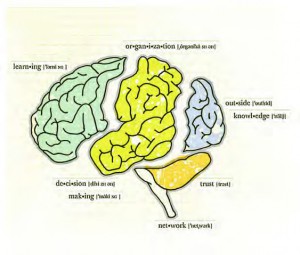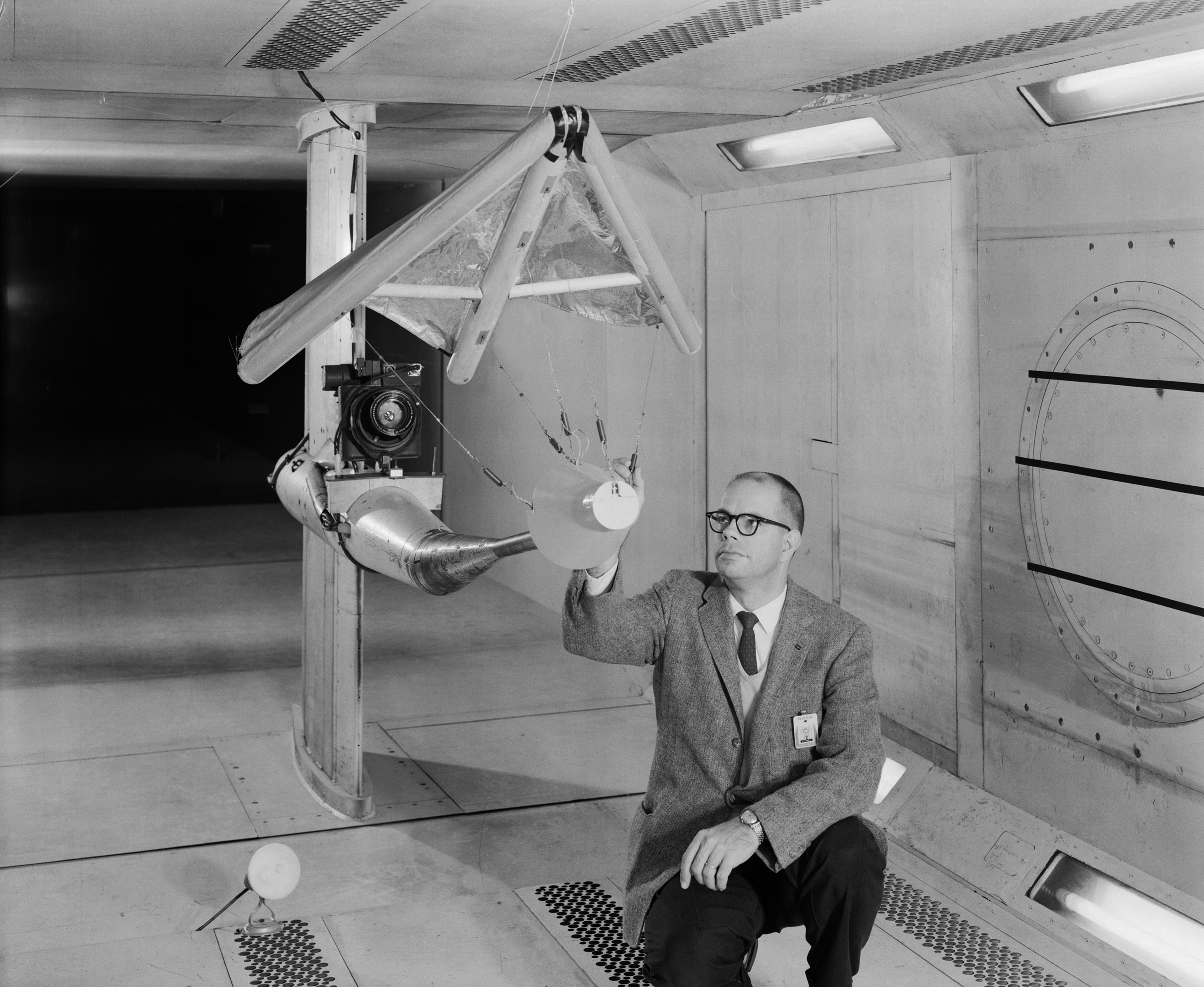By Laurence Prusak and Don Cohen
NASA is unquestionably a knowledge-intensive organization. Among government agencies, it is probably the most knowledge intensive. Its work depends on acquiring and applying the sophisticated knowledge of fields including engineering, science, and mathematics, as well as knowledge about how to organize immensely complex projects. Knowledge is also one of the agency’s essential products. It is a major source of new knowledge about the earth, the solar system, and the universe. Its mandate specifically includes generating and sharing knowledge, aims articulated in two of the three parts of NASA’s mission statement:
- To advance and communicate scientific knowledge and understanding of the earth, the solar system, and the universe.
- To research, develop, verify, and transfer advanced aeronautics and space technologies.
Effective knowledge organizations substantially rely on structures and practices that differ from the command-andcontrol hierarchies of many traditional manufacturing firms. We want to look briefly at how NASA stacks up as a knowledge organization and what it may still need to do to meet the knowledge demands of its future missions. We acknowledge our limitations—NASA is a large, complex, varied organization that we are still in the process of exploring. But we think we have learned enough to make some useful observations.
The Knowledge Organization
Knowledge organizations behave differently because knowledge is different—from information, from data, and certainly from the material resources that dominate manufacturing firms. Knowledge is often local, originating and having meaning in the context of particular work and a particular place. It is social, created, understood, and used mainly by groups of people who work together or share the same profession. It is largely tacit—that is, embedded in work practices and bound up with the experience, judgment, and understanding of experts and therefore impossible to capture fully in a document or diagram. Because it is local, social, and tacit, its effective use is voluntary, depending on the full engagement of people and their willingness to tap their inner resources and challenge themselves and each other.
Successful knowledge-intensive firms—private-sector examples include McKinsey and Company, Northrup Grumman, Google, and W. L. Gore and Associates—encourage practices and values and organize and manage themselves in ways that recognize the special nature of knowledge and support its creation, sharing, and use. Here are some of the most important characteristics of knowledge-intensive firms and our sense of how well NASA exemplifies them.
Extensive and Durable Informal Networks
A lot of organizational knowledge travels through informal networks, the personal connections that people establish in the course of their careers. We all have people we go to for knowledge or help or because we think they can connect us with someone else who has the knowledge we need. Organizations that have strong networks give people opportunities to meet and mix, understand the value of informal conversation, and have cultures that value both asking for and giving advice.
NASA gets high marks for its informal networks. Its employees tend to have long careers at the Agency, so they have time to build extensive networks of people they can call on to help solve problems. Members of project teams form ties that persist even after they move on to other work. NASA retirees and older employees—the “greybeards” who worked on Apollo and Viking, for instance— often retain connections with the Agency and are called on, informally and formally, to offer their expertise and advice.
Most important, that kind of knowledge sharing is the norm at NASA. Of course there are people who want to defend their territory and engineers whose desire to solve problems themselves leads them to reject ideas that are “not invented here,” but we see most NASA personnel readily seeking advice from people whose expertise they respect and responding to requests for their expertise.
Trust (and Mission)
Effective knowledge work requires a high level of trust. People will not share or seek knowledge from others or work effectively together on collaborative knowledge-intensive projects unless they believe that their colleagues are trustworthy: not only that they will be reliable providers and users of knowledge, but that they will share credit appropriately and not use their own knowledge for political or professional advantage.
Trust has many sources, including the trustworthy behavior of leaders and managers. Shared values and a shared sense of mission powerfully contribute to trust at NASA. In project after project, the tensions and disagreements that are an inevitable part of doing difficult work together are offset by recognition of a shared commitment to an important and noble goal: the safety of astronauts and advancing human knowledge of the earth, the solar system, and the universe.
Respect for Local Knowledge
The localness of knowledge—its origin and use in the context of particular work—means that leaders and managers can never know everything they need to know to make good decisions. They must consult with and sometimes defer to people engaged in the daily “hands-on” work of the organization. W. L. Gore and Associates offers a striking example. Recognizing that innovation comes from the people directly engaged in research, the company gives individual researchers full authority to start new projects if they can convince enough people of the value of their ideas to form a project team.
 Historically, NASA has a mixed record in this area. The Challenger and Columbia accidents arguably resulted from failures to pay enough attention to individual or local knowledge, either because of poor communication, a failure to give minority views serious enough attention, or a thencommon cultural barrier to speaking truth to power.
Historically, NASA has a mixed record in this area. The Challenger and Columbia accidents arguably resulted from failures to pay enough attention to individual or local knowledge, either because of poor communication, a failure to give minority views serious enough attention, or a thencommon cultural barrier to speaking truth to power.
NASA’s new governance model, described in its recently revised “Program and Project Management Requirements” document (NPR 7120.5D), attempts to address this issue by providing a structure for dissenting opinions to be heard and to rise to the highest level of management if they are not satisfactorily resolved at a lower level. This change matters, both as a process and as a signal that management wants different opinions. To ensure that the process works, though, the organization needs to continue to demonstrate a commitment to carefully evaluating diverse ideas and opinions.
Shared or Distributed Decision-Making
Genuine respect for local knowledge means putting some decision-making power in local hands—giving people the authority to make choices that only they are qualified to make because only they have the relevant knowledge. Clearly, it would not be appropriate for groups working on NASA’s complex, highly integrated projects to make local decisions without regard to their effect on the bigger picture—it’s the job of systems engineers and project managers to make decisions based on the system as a whole. But effective project managers talk about making clear to team members what has to be done and giving them the freedom to decide how to do it, based on their experience and expertise. Good NASA project leaders involve a broad range of project participants in “trade studies” that evaluate the effects of possible design changes so that local needs and knowledge can be heard and weighed.
The 7120.5D processes and requirements document, which specifies project roles and milestones, is an interestingly mixed story in relation to shared decision making. Writing and reviewing the document, the Agency worked hard to incorporate practical knowledge so that it would reflect some of the wisdom of real experience, not just a theoretical idea of how the work should be done. In many organizations, important knowledge is embedded in the processes and routines used to get work done, and 7120.5D tries to capture and promote that embedded knowledge. The document also recognizes the need for flexibility within the guidelines to respond differently to different projects and situations. At the same time (as in any large, complex organization) a tension exists between, on the one hand, the need for standards to support coordination, efficiency, and an expected level of quality and, on the other hand, the freedom to respond creatively to unusual and unexpected circumstances. Time will tell whether the new processes and requirements successfully balance these two needs.
Learning
Effective knowledge organizations make sure their employees keep learning, sometimes through support for formal education but especially through appropriately challenging work experience (often guided by mentors and more experienced colleagues). Many of these organizations also recognize and encourage learning opportunities that are neither formal education nor work per se: observing and talking to colleagues, hearing and telling stories that capture the realities of work.
A strength of NASA’s formal educational programs is that they often use these multiple learning modes. Course offerings from the Academy of Program/Project and Engineering Leadership (APPEL) and APPEL’s Masters Forums combine storytelling and conversation with more traditional instruction. Goddard’s Systems Engineering Education Development program, Ames’s Project Excellence Systems Engineering Development program, and Glenn’s Space Missions Excellence program all combine classroom instruction, mentoring, and guided project experience.
Long-time NASA employees often talk about how much they have learned from their project work. Many describe being given significant responsibility for a project element as soon as they began work at the Agency and talk about how much that early hands-on experience taught them and how it ensured their commitment to NASA. But many people we have spoken to— people within NASA and NASA observers—worry that current and future generations of employees will not get enough handson design and engineering experience to develop their expertise and keep their interest. NASA projects have always involved both civil servants and contractors; many are concerned that the civil servants may spend too much time overseeing technical work done by others and not enough doing the work themselves. The result, they fear, will be difficulty attracting the most talented engineers and scientists and insufficient technical expertise within NASA.
Pursuit of Outside Knowledge
Successful knowledge-intensive organizations look outside their borders for the some of the knowledge they need. As part of its “connect and develop” strategy, Procter and Gamble has more than fifty “technology entrepreneurs” who are responsible for seeking knowledge outside the company. Organizations that cut themselves off—from arrogance or in an effort to protect their knowledge from outsiders—wither and die.
NASA works cooperatively with universities and foreign space agencies (as well as industry) in part to share the cost of expensive missions but also to get the benefit of outside expertise. The International Space Station is the most visible example of multinational cooperation, but far from the only one. NASA also sponsors competitions—Centennial Challenges—to encourage outsiders to apply their knowledge and skill to technical challenges. In 2007, Peter Homer won the Astronaut Glove Challenge, designing a more dexterous spacesuit glove. NASA is now sponsoring a lunar lander challenge, administered by the X PRIZE foundation.
There are some limitations on these collaborations. The International Trade in Arms Regulations sometimes create barriers to international knowledge sharing. NASA’s relationship with private space entrepreneurs is at an early stage, so the extent and importance of knowledge sharing remains to be seen.
Knowledge About Knowledge/Knowledge Roles
Many organizations spend significant time and money on knowledge development, transfer, and use. Leaders and others understand how knowledge works, make knowledge part of the organizational conversation, and recognize the importance of investing in knowledge. McKinsey and Company, for instance, employs hundreds of people whose job is to facilitate knowledge exchange and provide essential context for documents and other resources. Intel has used “knowledge harvesters” to identify valuable project knowledge and help communicate it to other project teams that can use it.
At NASA, a relatively small number of people devote their time explicitly to knowledge work—in APPEL, for instance, through knowledge programs at the Jet Prolusion Laboratory and Goddard, and in recent Exploration Systems Mission Directorate efforts to link knowledge sharing to risk management. As in many organizations, though, there is more knowledge work to be done than there are people to do it, and the Agency may need to do more to preserve and share its project knowledge. NASA knowledge personnel should also perhaps practice what they preach by getting together to share their knowledge about knowledge more frequently and systematically.
The Future of Knowledge at NASA
On balance, NASA displays many of the characteristics of a healthy knowledge organization. Its mission-oriented, generally high-trust culture; its robust informal networks; its emphasis on learning; and its reasonable openness to outside knowledge all contribute to knowledge effectiveness. Formal and informal mentoring and long careers with the Agency foster individual and group expertise.
We believe the extraordinary challenges of NASA’s future missions—both their technical demands and their duration— will require extraordinary efforts to develop and transmit knowledge. The future of knowledge at NASA should include continued attention to learning, with an emphasis on learning from hands-on experience. It should mean continuing efforts to understand and respect local knowledge and bring it into the decision-making process. It should continue and strengthen the trend toward seeking and using outside knowledge. And it should include additional investment in the practices that preserve and communicate valuable project knowledge. Acquiring, sharing, and preserving the generations of knowledge needed for its new human exploration missions will require substantial ongoing attention to good knowledge practices. From its earliest days, NASA has developed ways to create and coordinate vast amounts of knowledge to accomplish its innovative missions. It can and must continue to do so if it is to succeed in the future.







